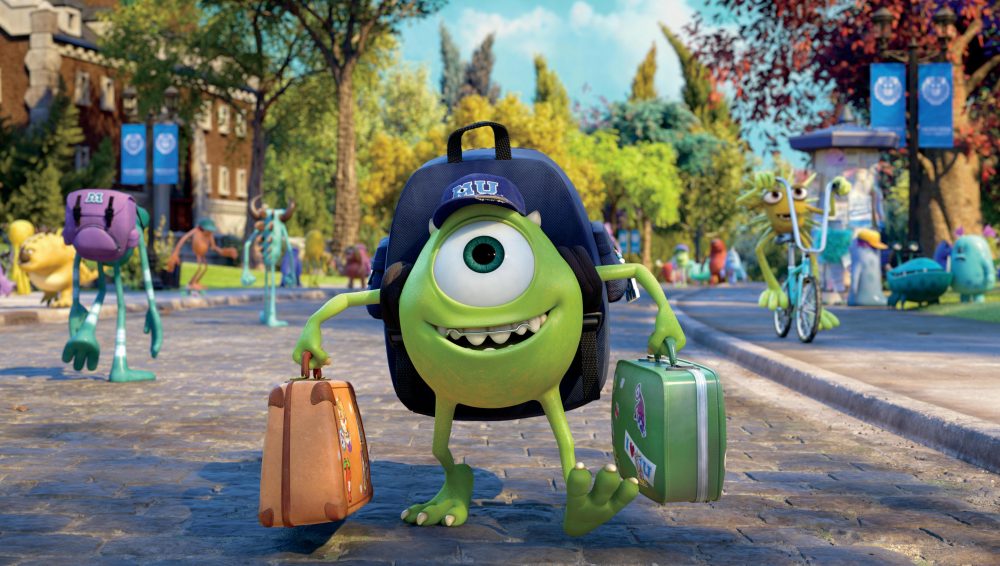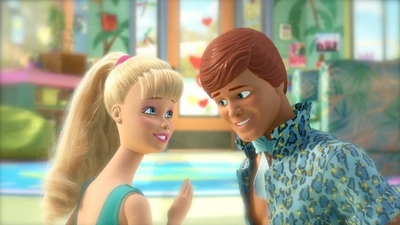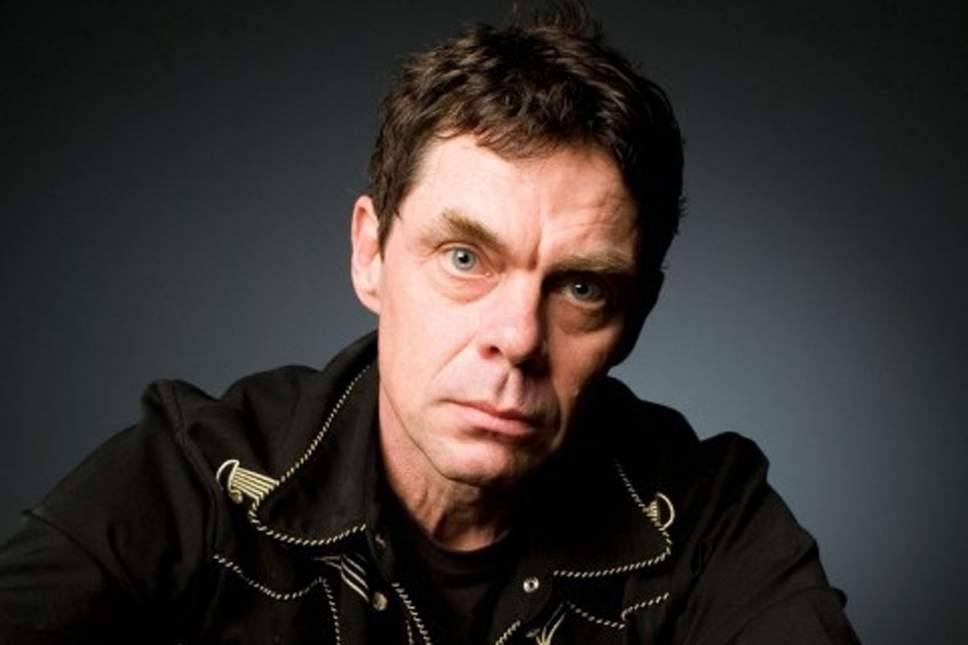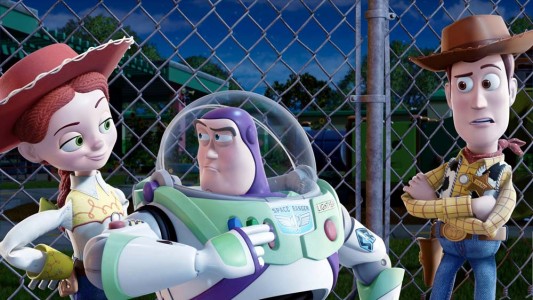
Lead animators and Pixar veterans Bobby Podesta and Mike Venturini visited Edinburgh International Film Festival this week for the UK Premiere of Toy Story 3. Screening only 24 hours after opening in the USA, it was the first chance to see the film this side of the Atlantic.
I met with Bobby and Mike to discuss the Festival, Toy Story 3, and their approach to animation.
“For me, I really love the approach to filmmaking that we have at the studio. We make films that resonate with us in one way or another, with good stories. That’s the most important thing,” says Bobby.
Edinburgh International Film Festival has hosted popular UK Premieres of Ratatouille, Wall-E, and Up. However, success was not a foregone conclusion, and Mike explained that, “we kind of know our audience, and when I say ‘our audience’ I mean our American audience. Sometimes, culturally, you don’t know how the audience will identify with the film you are making and you hope that there’s something genuine in there that everyone can identify with. So to come here and play for this audience and have them be able to identify with it and to enjoy it is great.”
Here’s a full transcript of the interview. I spoke with Bobby first.
You’ve been at Pixar for a long time now. What keeps you there?
Bobby: For me, I really love the approach to filmmaking that we have at the studio. We make films that resonate with us in one way or another, with good stories. That’s the most important thing. If you think about a lot of our films, if I pitched you the idea of the film like you were the person in charge with all the money, there is no way you’d give me the money to make the film. Like: Okay, there’s a rat and he meets a chef in a kitchen – “No!” Okay, there’s a robot, there are two robots, and they’re in love, and there’s no talking at all for the first 45 minutes – “No!” You know?
The fact that we can try to tell stories that we believe in and that we’re confident that we can execute is, to me, so exciting.
It seems like the idea of having a great story pervades through everything Pixar does.
It does. It really is the most important thing.
So what is the process? Do you brainstorm together or does it get passed down?
The story is usually something that the director of the film has come up with, it’s their idea. It starts very small. The director has an idea and starts working with a couple of people, they develop the story, it slowly grows, they develop it more, and finally they design characters and build models, then we start animating it.
How much creative freedom do you have while animating?
I have a fair amount. You – the animator – will get a shot and the director will tell you, this is what’s going on in the sequence, who the characters are, and what they need to achieve. You’ll also have the voice recorder of the actor acting out the scene. However, the director will not tell you how to act. You get to bring that to the shot. You have all the ingredients and you put them all together, and you add what you are bringing to the scene to create the performance to make it something unique in itself. For example, if I was animating a shot of Woody, the goal would not be for you to be able to tell that I animated it, or that it’s Tom Hanks doing the voice – it just has to be Woody.
What is your approach to adding little flavours of character to that? Do you look in a mirror?
We’re constantly observing life. We’re taking things in, we’re storing them, then we’ll use them as our resources. For example, if I was animating a woman who is sitting and she has hair in her face… granted, I’m probably not going to brush my hair away because I have no hair, but I noticed when you did it that you used a single finger to brush it back. Now, I’ll remember that. I will blatantly steal that from you, I will not give you any credit, but I will weave it into something. There are literally hundreds of things like that we are constantly trying to weave in.
Do you look at the world as though you are preparing to recreate it?
No, it’s more like, as an animator, you are used to observing things in the world around you. It’s a bit like trying to turn off your ears. You’re always hearing things and taking things in, constantly watching and taking things in, tucking things away to use later.
What is your favourite scene in Toy Story 3?
I have two – all the stuff with Spanish Buzz, which is so funny and so unique. It’s like a new character but, come on, it’s the same character – he’s been in like three films! It is so hilarious. I just wanted more of that.
Also, what we call Mr Tortilla Head. It’s so funny, oh my gosh, and it’s so weird, right? It’s so crazy, but it works! It’s totally bizarre, but it’s funny. When he first takes those steps you just start laughing. If you asked people, “Why are you laughing?” they wouldn’t know. There’s just something about it. To me, that’s the beauty of animation – when you can do something that’s purely animation and people are having this reaction to it, and sometimes they’re not even sure why.
I’ve noticed that you guys seem to have amped up the emotional involvement – it’s like you’ve found the button that makes people cry. Is there a certain technique that goes into that, or is it something that has developed naturally?
A lot of the moments that you’re talking about are things that are really important to us. John Lasseter’s son is going off to college. You know? That’s a big deal in his life. That means something. In Finding Nemo, Andrew Stanton talked about how he was so overprotective of his children. That’s the story.
We’ll do things that really resonate with us and if we trust ourselves enough to be honest with what is important, it tends to be something that carries across to a lot of people. We all hold things that are important.
I studied Wall-E and anthropomorphism, and I think it’s something Pixar is fantastic at. It’s almost like you could take a bin bag and make it human. What’s your approach to that?
For Wall-E, one of the moments I feel that is like taking an object that is so rudimentary in shape is at the end of the film. He’s blank, then he changes. Literally all that happens is his eyes tilt and we go, “Oh my god you’re alive!” It’s amazing. It’s such a unique thing, and you believe it. That’s what we’re trying to go for, is to create something that you can believe.
So what is your approach to humans? Toy Story 3 seems to have taken animating humans to a whole new level.
What we’re trying to do is to make something that’s believable. A lot of times, people say “real”, but no, there’s a difference between “real” and “believable”. We could go out and we could build and animate and render something that looks spot on, exactly real. But that’s not our intention. We want something that’s believable – that you believe in that character and you believe in that moment and in what they are doing.
And then I sat down with Mike!
Toy Story 3 was amazing, I really enjoyed it. I’ve yet to hear a bad word about it.
Mike: Yeah, that’s what’s amazing, so… we kind of know our audience, and when I say “our audience” I mean our American audience. Sometimes, culturally, you don’t know how the audience will identify with the film you are making and you hope that there’s something genuine in there that everyone can identify with. So to come here and play for this audience and have them be able to identify with it and to enjoy it is great.
Your upcoming feature Brave is set in Scotland, so does that ever worry you?
It does a little bit. If there’s any audience that will have the critical eye to really see if we’ve done our homework, that we’ve respected their home and their environment, it’s going to be here. So, I think when that movie comes out we’re definitely going to be paying attention to how the audience here receives it.
Bobby and I were talking about your approach to animating. In terms of animation, what is your biggest challenge?
I think the biggest challenge for us is when we have characters that are not human, but have a lot of human traits. You know, in a situation like Monsters or Nemo or Ratatouille – in Ratatouille in particular where you have a rat who is experiencing some very human emotions and going through some very human things in his life – you have to convey all that using the body of a rat. Bridging that gap is very challenging.
When animating humans, the level of detail is challenging, but we have so much that we can reference – there’s a wealth of information out there. Up was very challenging because you had dogs that verbalised their thoughts, but had to act as much as a dog as possible, and that was difficult to do.
Kind of like the difference between Goofy and Pluto.
Exactly. On Toy Story 3, one of the big challenges is that each toy has to move differently based on the materials they’re made out of. You can’t use the same approach to animating something as simple as a walk. With Woody and Buzz, they have to have entirely different walks. From a technique standpoint, that’s a challenge.
What have been the most fun sequences to animate?
In Toy Story 3, the sequence I really enjoyed was a sequence we called Gambling Den, where they’re gambling roulette-style. I just thought that concept of using a speak and say game that a lot of people had when they were kids and betting batteries and Monopoly money made such perfect sense, but it was such an original idea. I loved it. I loved the darkness of that moment.
I also loved the sequences with Ken because I thought his character was very funny. He has this split personality where half of it is manufactured, he’s made to be a fashion doll, and he can’t get away from it, it’s in his DNA. Then there’s this other side where he’s trying to compensate for that and not be a “girl’s toy” and be one of the guys. Any scene where you see him struggle with that – like when he shows Barbie his clothes and gets really excited about it – those are all a lot of fun.

When I first heard Michael Keaton would play Ken, I didn’t understand it, but as soon as you see it you get it.
Yeah. And what’s interesting is that Lee Unkrich was doing recording sessions with Michael Keaton he’d come back and he’d play us some stuff. He was talking about how Keaton really embraced this character, and would take the script and improvised some things here and there that just made it so hilarious. There’s one moment in the gambling den when he says, “Take ‘em to the li-BERY” and mispronounces “library”, and that wasn’t scripted. Michael Keaton improvised that. Things like that gave such charm to his character, that even when he’s trying to be tough, this little plastic doll still has his flaws.
What are your personal influences as an animator?
My personal influences date back to when I was a child and I just loved drawing and watching cartoons. I was really fond of the classic Disney films – The Jungle Book was one of my favourites. I just loved the characters, I loved how scary the tiger was and how silly the snake was… I just loved a lot of the charm in those characters. When I would draw, I would imagine that my drawings had all that personality and that life, and when I found out that I could do that with animation, I went there. A lot of my influences were of the Disney persuasion.
There are always lots of little moments that seem improvised, like they’re not part of the original script. How do those come about?
Some of the ideas are scripted, the bigger story points. But when it comes down to how the characters move and behave and their little intricacies, that usually comes from the animator. It might be them trying an idea with, for example, how Ken walks. He’s very stiff but he’ll suddenly stop and turn his head, startled. How he moves and bounces was an idea of the animator Angus Kline’s, he’s making Ken move like Ken might have learned to move while being played with as a toy. That movement suddenly starts to become part of his personality.
When Buzz becomes Spanish, it adds so much, but it’s still Buzz.
That’s trying to think of how Buzz’s kind of default personality is, then if Buzz spent a lifetime growing up in a different culture, how that might affect his behaviour. That was a fun character to develop – there was a lot of reference done where Carlos, who is Spanish himself, did a lot of reference on traditional Spanish dance to come up with flourish and flair to the movement. Watching him animate that scene where he walks around Jessie, he did several versions of that shot. Some ideas would sink, some would swim, and the final scene was kind of a compilation of those best ideas.
It’s a perfect example – watching it on the scene it’s hilarious and makes perfect sense for the character, but a lot of time was spent exploring that idea. That was the pioneering scene that really nailed it, then we could run wild from there.
Toy Story 3 sold out 3 screenings last Saturday, and its fourth and final screening sold out in no time when the film was selected as Best of the Fest. Toy Story 3 is set for official UK release on 23 July 2010.
A massive thanks to Disney, Bobby, and Mike for their time.




